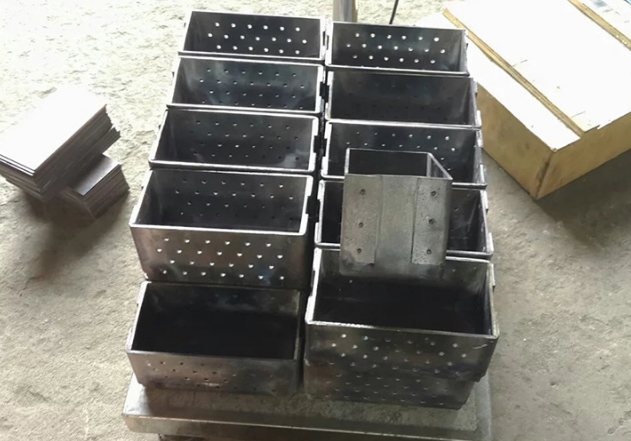molybdenum boats
Advantages of molybdenum boats
Molybdenum boat differs in mechanical strength, тугоплавкостью,
corrosion resistance in aggressive liquid and gaseous media. Molybdenum
boat has a high modulus of elasticity and low coefficient of thermal
expansion. Such advantages can molybdenum boats in the most demanding
and complex technological production conditions. Molybdenum boats almost
doubled compared to tungsten, so that the products made of molybdenum
have a greater specific strength (up to a temperature of +1370 ° C).
Chemical properties
Molybdenum boat reacts with hydrochloric acid, with sulfuric acid only
at a temperature of 80-100 ° C nitric acid, aqua regia dissolves
molybdenum only at a temperature of 100 ° C. In cold alkaline solutions
of molybdenum boot is stable, but in hot alkaline solutions molybdenum
is slowly destroyed. Impurities of carbon, oxygen, silicon, aluminum,
nitrogen, iron, sulfur and calcium, phosphorus, which in the technical
molebene in hundredths or thousandths of a fraction of a percent,
significantly affect the properties of molybdenum. Most of these
impurities make molybdenum more fragile. The most harmful of all
contaminants is oxygen. If it contains 0.0008-0.004% by volume,
low-melting oxides lead to a drastic increase in its fragility and a
reduction in its plastic deformation properties, especially in the
presence of carbon and nitrogen. With an increasing percentage of oxygen
of more than 0.015% molybdenum, pressure is not processed and becomes
brittle.
disadvantage
Almost the only downside is the high cost of molybdenum boats, since
molybdenum is a metal, is related to the elements, rare earth metals and
it in its pure form is quite heavy. In addition, it is тугоплавок and
difficult to treat.
production
Molybdenum boat is made of high quality molybdenum plates (МЧВП, MCH)
way of arch, rivets or powder by pressing with subsequent mechanical
processing. This technology ensures high operational reliability and
heat resistance. They can be made in different shapes and sizes.
use
Molybdenum boat is widely used in electrical engineering, in the
production of ceramics in high-temperature plants with a vacuum or
hydrogen atmosphere for the annealing and sintering of powdered products
from non-metals and metals, the growth of single crystals, the
restoration of oxides of metals, and melting of glass, etc.
.
.
;
.
molybdenum
Cobalt
Iron
Carbon
Sulfur
Copper
Zinc
Lead
Total Impurities
99.99
<0.00002
0.002
<0.01
0.0002
0.00005
0.00005
0.00002
<0.01
Diam
thickness
length
width
purity
Details

Foil
0.03mm -0.8mm
>3000mm
2mm-150mm
99.99%
Details

sheet
0.03mm-50mm
100mm
100mm
99.99%
Details

wire
0.025mm
-0.05mm
7000-8000m
99.99%
Details

Stab
2.0mm
-150mm
<1000mm
99.99%
Details

powder
50nm- 20μm
99.99%
Details

Pellets
6mm-13mm
99.99%
Details

granules
6mm-13mm
99.99%
Details

Sputter
target
3mm-300mm
O30--2000mm
99.99%
Details

crucible
30ml-50ml
99.9%
Details

mesh
0.05-2mm
hole:0.3X0.6mm, 0.5X1mm
............20X40mm
99.9%
Details
Advantages of molybdenum boats
Molybdenum boat differs in mechanical strength, тугоплавкостью,
corrosion resistance in aggressive liquid and gaseous media. Molybdenum
boat has a high modulus of elasticity and low coefficient of thermal
expansion. Such advantages can molybdenum boats in the most demanding
and complex technological production conditions. Molybdenum boats almost
doubled compared to tungsten, so that the products made of molybdenum
have a greater specific strength (up to a temperature of +1370 ° C).
Chemical properties
Molybdenum boat reacts with hydrochloric acid, with sulfuric acid only
at a temperature of 80-100 ° C nitric acid, aqua regia dissolves
molybdenum only at a temperature of 100 ° C. In cold alkaline solutions
of molybdenum boot is stable, but in hot alkaline solutions molybdenum
is slowly destroyed. Impurities of carbon, oxygen, silicon, aluminum,
nitrogen, iron, sulfur and calcium, phosphorus, which in the technical
molebene in hundredths or thousandths of a fraction of a percent,
significantly affect the properties of molybdenum. Most of these
impurities make molybdenum more fragile. The most harmful of all
contaminants is oxygen. If it contains 0.0008-0.004% by volume,
low-melting oxides lead to a drastic increase in its fragility and a
reduction in its plastic deformation properties, especially in the
presence of carbon and nitrogen. With an increasing percentage of oxygen
of more than 0.015% molybdenum, pressure is not processed and becomes
brittle.
disadvantage
Almost the only downside is the high cost of molybdenum boats, since
molybdenum is a metal, is related to the elements, rare earth metals and
it in its pure form is quite heavy. In addition, it is тугоплавок and
difficult to treat.
production
Molybdenum boat is made of high quality molybdenum plates (МЧВП, MCH)
way of arch, rivets or powder by pressing with subsequent mechanical
processing. This technology ensures high operational reliability and
heat resistance. They can be made in different shapes and sizes.
use
Molybdenum boat is widely used in electrical engineering, in the
production of ceramics in high-temperature plants with a vacuum or
hydrogen atmosphere for the annealing and sintering of powdered products
from non-metals and metals, the growth of single crystals, the
restoration of oxides of metals, and melting of glass, etc.
.
.
;
.
| molybdenum | Cobalt | Iron | Carbon | Sulfur | Copper | Zinc | Lead | Total Impurities | ||
|---|---|---|---|---|---|---|---|---|---|---|
| 99.99 | <0.00002 | 0.002 | <0.01 | 0.0002 | 0.00005 | 0.00005 | 0.00002 | <0.01 |
| Diam | thickness | length | width | purity | Details | ||
|---|---|---|---|---|---|---|---|
 |
Foil | 0.03mm -0.8mm | >3000mm | 2mm-150mm | 99.99% | Details | |
 |
sheet | 0.03mm-50mm | 100mm | 100mm | 99.99% | Details | |
 |
wire | 0.025mm -0.05mm |
7000-8000m | 99.99% | Details | ||
 |
Stab | 2.0mm -150mm |
<1000mm | 99.99% | Details | ||
 |
powder | 50nm- 20μm | 99.99% | Details | |||
 |
Pellets | 6mm-13mm | 99.99% | Details | |||
 |
granules | 6mm-13mm | 99.99% | Details | |||
 |
Sputter target |
3mm-300mm | O30--2000mm | 99.99% | Details | ||
 |
crucible | 30ml-50ml | 99.9% | Details | |||
 |
mesh | 0.05-2mm | hole:0.3X0.6mm, 0.5X1mm ............20X40mm |
99.9% | Details | ||
